 |
| |
| |
[July 2024]
Therasia IV, Settlement patterns and architecture in modern times.
The fourth volume in the series ‘herasia, covers aspects of traditional life and its imprints on the human-made environment including a
variety of topics ranging from rural architecture (terraces, dry-stone walls, water management) and settlements to the typology,
construction technology, and pathology of underground structures.
|
| |
|
| |
[July 2023]
Aellopos, Studies in Honour of Iris Tzachili.
A collection of 35 studies dedicated to Iris Tzachili, Professor Emerita of Prehistoric Archaeology of the University of Crete.
The authors are mainly her students together with many of her colleagues, archaeologists and historians, from Crete, Thera and the Department
of History and Archaeology of the University of Crete. The thematically and chronologically multifaceted studies deal with archaeological
and historical issues, as well as highlighting the historicity of heritage and contemporary reception.
|
| |
|
| |
[May 2022]
¬ayindir 1922, A Tale of Loss from Asia Minor.
The texts in this book concern the small town of Bayindir in the valley of the Kaystros, near Smyrna, and its inhabitants.
They attempt to strike a balance between historical essay, timeless reminiscences, embellished scholarly narratives and personal feelings.
|
| |
|
| |
[2021]
Therasia III. Archaeological research and landscape history of an island community.
Therasia is a suitable field for the observation of small island communities, having preserved significant traces of a cultural landscape
connected with the diachronic ekistic history of the island, the uses of land, and the perception and experience of the space by human
communities on the past.
|
| |
|
| |
[Noe 2020]
Good Works: Studies in Honour of Professor Clairy Palyvou.
Announcing the publication of the volume Good Works, Studies in Honour of Clairy Palyvou, edited by Iris Tzachili and Maria Arakadaki, by Ta Pragmata Publications.
The papers largely lie in Professor Palyvou's own areas of interest, covering technical and theoretical architectural issues,
mainly of the Bronze Age but also in the modern period.
|
| |
|
|
 |
| |
| |
Members:
Tzachili Iris
Daskalakis Nikos
|
| |
Collaborators:
Douskos Dimitra
Pavlaki Katerina |
| |
|
| |
|
|
|
| |
|
| |
|
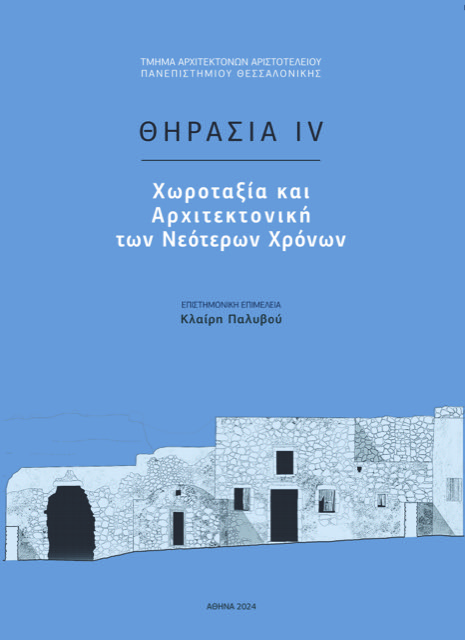
|
Therasia IV, Settlement patterns and architecture in modern times.
Edited by: Clairy Palyvou
ISBN 976-618-87109-0-0, pp.239
The collective work presented in this book is the result of long-term and multidisciplinary research on Therasia, conducted within the framework
of the research program "Timeless Island Cultures: The Case of Therasia." It is the fourth volume in the series, reflecting the rich
and diverse work that has been accomplished. In Therasia, time stopped in the 1950s. Entire settlements, such as Agrilia, were abandoned,
leaving behind weathered witnesses of a harsh life, entirely dependent on the natural characteristics of the land. The ten articles in
this volume, along with the rich visual material that accompanies them-products of primary field documentation-cover aspects of traditional
life and its imprints on the human-made environment. These include a variety of topics ranging from rural architecture
(terraces, dry-stone walls, water management) and settlements to the typology, construction technology, and pathology of underground
structures. The close ties between the small Therasia and the larger Thera (Santorini) are evident. Thus, the benefits of this research
extend to Thera as well, where the traditional settlements and the construction methods of vernacular architecture have been significantly
altered.
Read more >>
|
|
| |
|
| |
|
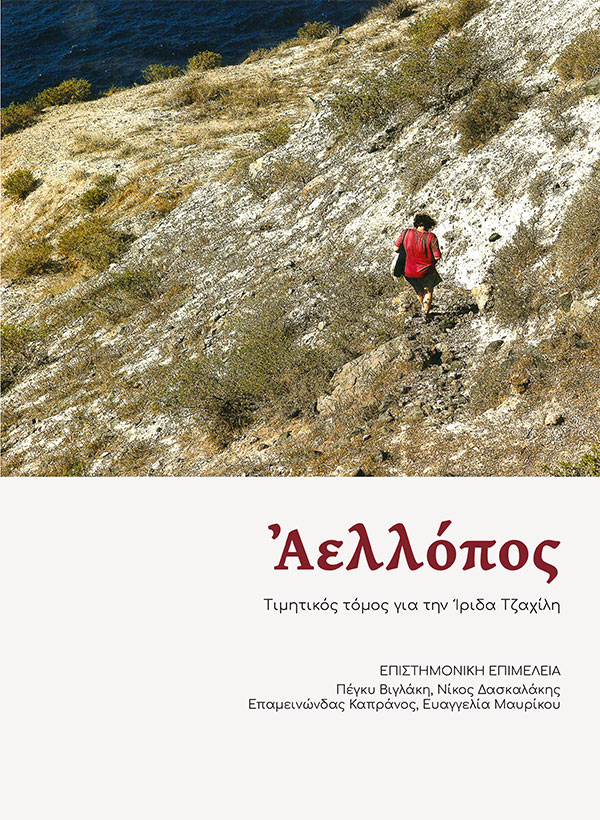
|
Aellopos, Studies in Honour of Iris Tzachili.
Edited by:
Peggy Viglaki, Nikos Daskalakis, Epaminondas Kapranos, Evangelia Mavrikou
ISBN 978-960-98261-9-8 pp. 546
Aellopos, Studies in Honour of Iris Tzachili is a collection of 35 studies dedicated to Iris Tzachili,
Professor Emerita of Prehistoric Archaeology of the University of Crete. The authors are mainly her students together with many
of her colleagues, archaeologists and historians, from Crete, Thera and the Department of History and Archaeology of the University
of Crete. The thematically and chronologically multifaceted studies deal with archaeological and historical issues, as well as
highlighting the historicity of heritage and contemporary reception.
The studies in this volume are classified in sections according to Iris Tzachili's academic and teaching contribution,
while they also raise contemporary archaeological questions, both scientific and social. To give a brief overview of the contents,
the first section deals with textiles in antiquity, a relatively new research topic that has sparked great archaeological interest,
offering a multitude of methodological fields, both technical (Spantidaki and Moulherat) and iconographic
(Karanastasi, Kekes, Boloti, Vakirtzi).
Read more >>
|
|
| |
|
| |
|

|
¬ayindir 1922, A Tale of Loss from Asia Minor.
Iris Tzachili.
ISBN 978-960-98261-8-1 pp.238
The texts in this book concern the small town of Bayindir in the valley of the Kaystros, near Smyrna, and its inhabitants.
They attempt to strike a balance between historical essay, timeless reminiscences, embellished scholarly narratives and personal feelings.
¬ayindir is the place of origin of my parents, and I have tried to create a historical synthesis out of all these things.
But. How does one write history when one is emotionally involved? How does one write the history of inherited absence, the transferral of loss,
the self that is constructed in an emotional void? I have tried, by touching on the sources, avoiding conventionality and accepting fragmentation,
to honour the affection I receiced by the refugees from Bayindir and my own tender memories of them.
Read more >>
|
|
| |
|
| |
|
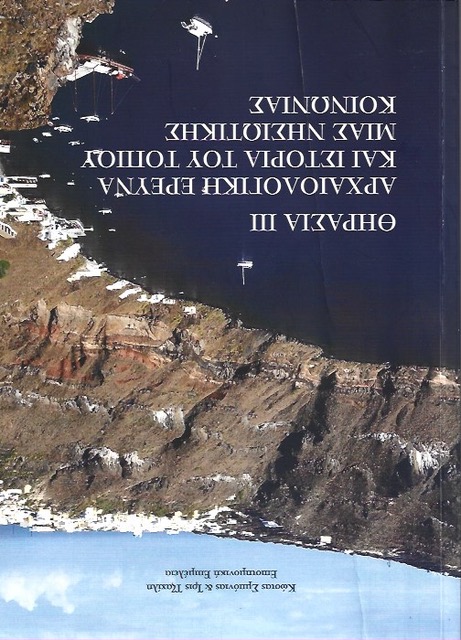
|
Therasia III. Archaeological research and landscape history of an island community.
Edited by:
Kostas Sbonias and Iris Tzachili.
ISBN 978-960-98261-7-4 pp.499
Therasia is a suitable field for the observation of small island communities, having preserved significant traces of a cultural landscape connected with the
diachronic ekistic history of the island, the uses of land, and the perception and experience of the space by human communities on the past.
These traces have been recorded in the context of the Island Cultures in a Diachronic Perspective: The Case of Therasia research project and the ongoing excavations
on the island. This volume focusses on the geological, archaeological and historical research carried out on Therasia in order to gain an understanding
of the history of the landscape in the longue duree, from prehistory to the 21st century. The research combines archaeological survey, geological and geophysical
study and excavation methods, while the investigation of the available historical sources and archival research complete the wide range of sources, data and perspectives.
Read more >>
|
|
| |
|
| |
|

|
Good Works
Studies in Honour of Professor Clairy Palyvou.
Edited by:
Iris Tzachili and Maria Arakadaki.
ISBN 978-960-98261-6-7 pp.467
Announcing the publication of the volume Good Works, Studies in Honour of Clairy Palyvou, edited by Iris Tzachili and Maria Arakadaki, by Ta Pragmata Publications.
The papers largely lie in Professor Palyvou's own areas of interest, covering technical and theoretical architectural issues, mainly of the Bronze Age but also in the modern period.
Contributors include Professors Christos Doumas on the architectural model in the Bronze Age, Theodosis Tassios on the design and construction of ancient Greek public works, Nanno Marinatos on Minoan cult sanctuaries, and John Papadopoulos on Mnesikles and the Propylaia of the Acropolis and the contemporary vicissitudes of the monument.
Read more >>
|
|
| |
|
| |
|
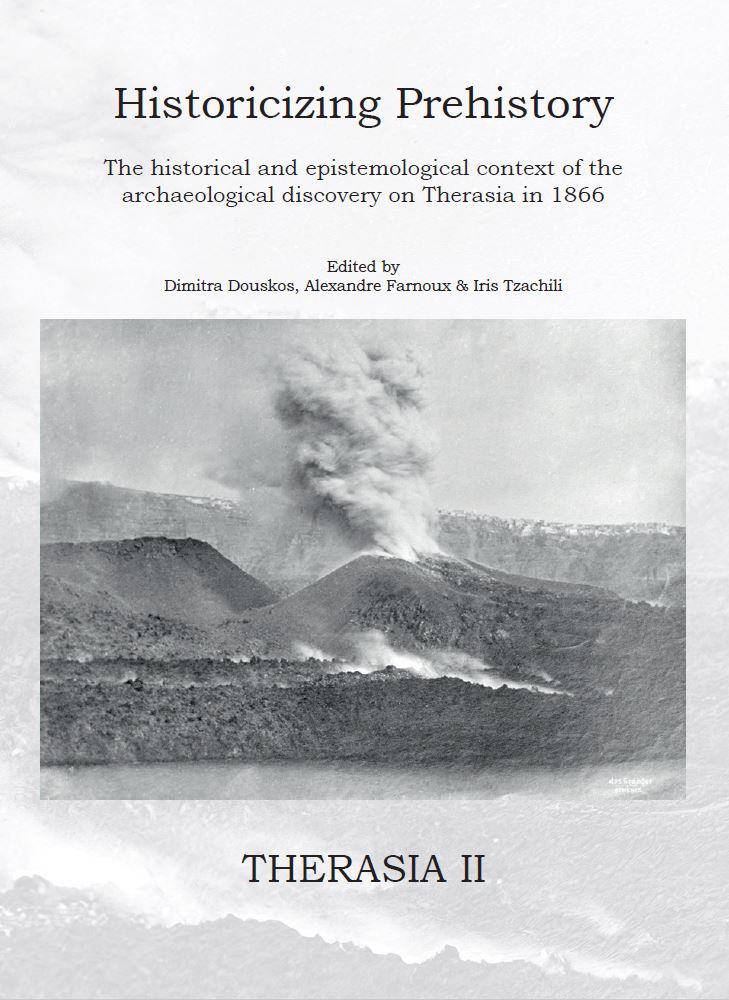
|
Therasia II, Historicizing Prehistory
The historical and epistemological context of the archaeological discovery on Therasia in 1866.
Edited by:
Dimitra Douskos, Alexandre Farnoux and Iris Tzachili
In January 1866, an important event shook the lives of the inhabitants of Santorini as well as of the entire
South Aegean and Crete all while attracting considerable scientific and political interest. In the large
enclosed gulf between Thera and Therasia, a series of eruptions, the emergence of new islands and the
submersion of others, heralded the volcanic phenomena that were to last until October 1870.
It was in this context that a prehistoric building was unexpectedly discovered on Therasia in the course
of mining works carried out to support the opening of the Suez Canal. The dwelling was the first of its kind
in Greece, well ahead of Troy, Knossos and Mycenae.
Read more >>
|
|
| |
|
| |
|
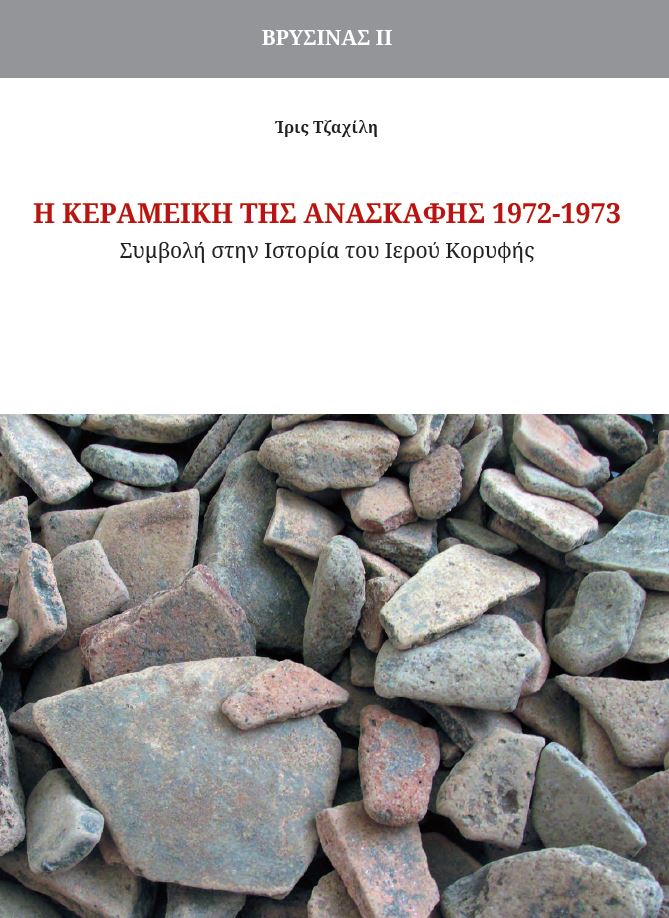
|
Vrysinas II - The Pottery of the 1972-1973 excavation
edited by Iris Tzachili
This volume is the second in the series of published archaeological material from the Vrysinas Peak Sanctuary,
covering the pottery from the 1972-73 excavation. Apart from the basic presentation of the pottery via illustrations,
photographs and descriptions, and of its chronological and typological context, the main themes developed are the
analysis of human activity at the site as evidenced by the pottery (e.g. large-scale communal meals), the offerings
of material and immaterial goods (the ritual), and the visitors' origins.
Read more >>
|
|
| |
|
| |
|
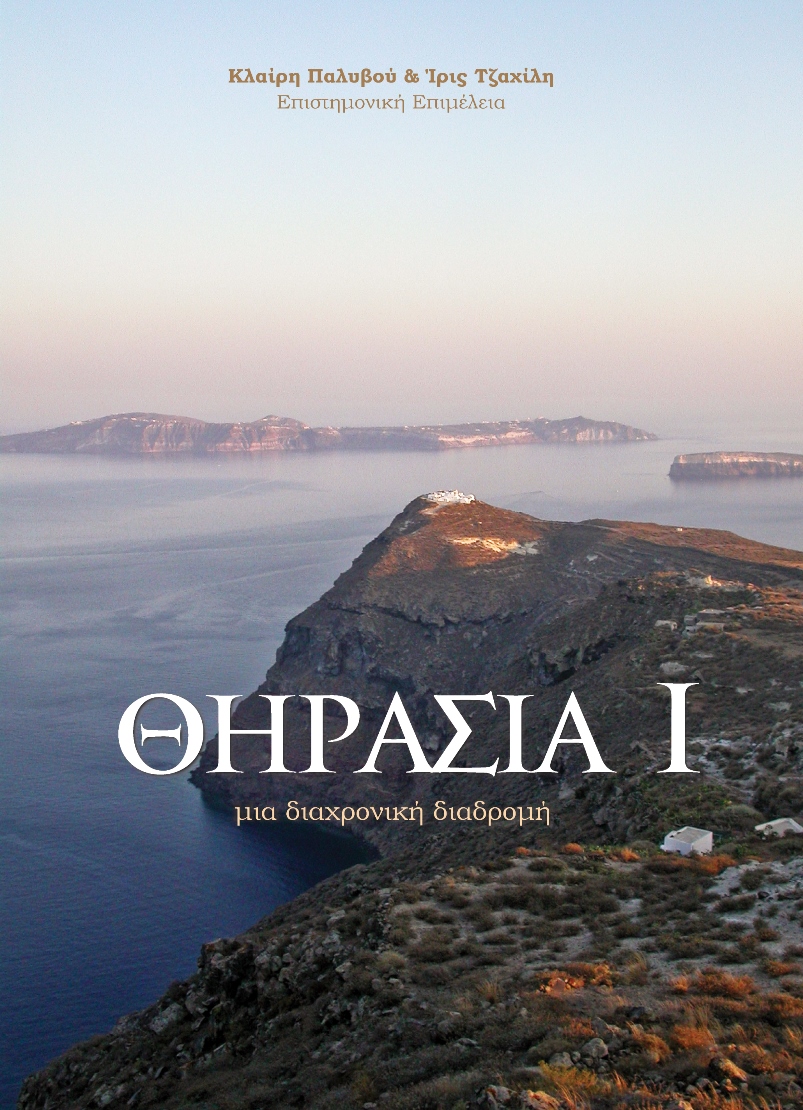
|
Thirassia I, a diachronic journey
edited by Clairy Palyvou and Iris Tzachili
The volume Thirassia I, A Diachronic Journey, is the first
contribution to the history of the island of
Thirassia, from the distant past (Bronze Age)
to recent times (architecture, social
anthropology). The work is a series of studies
focusing on different research aspects
(geology, mining technology, pottery fabric
analysis, etc.) and on the search for ancient
testimonies through surface surveys. It is, in
effect, a mapping of human presence on the
island down the ages, highlighting choices,
limitations, changes, continuities and
discontinuities, and investigating in a variety
of ways the phenomenon of insularity.
Read more >>
|
|
| |
|
| |
|
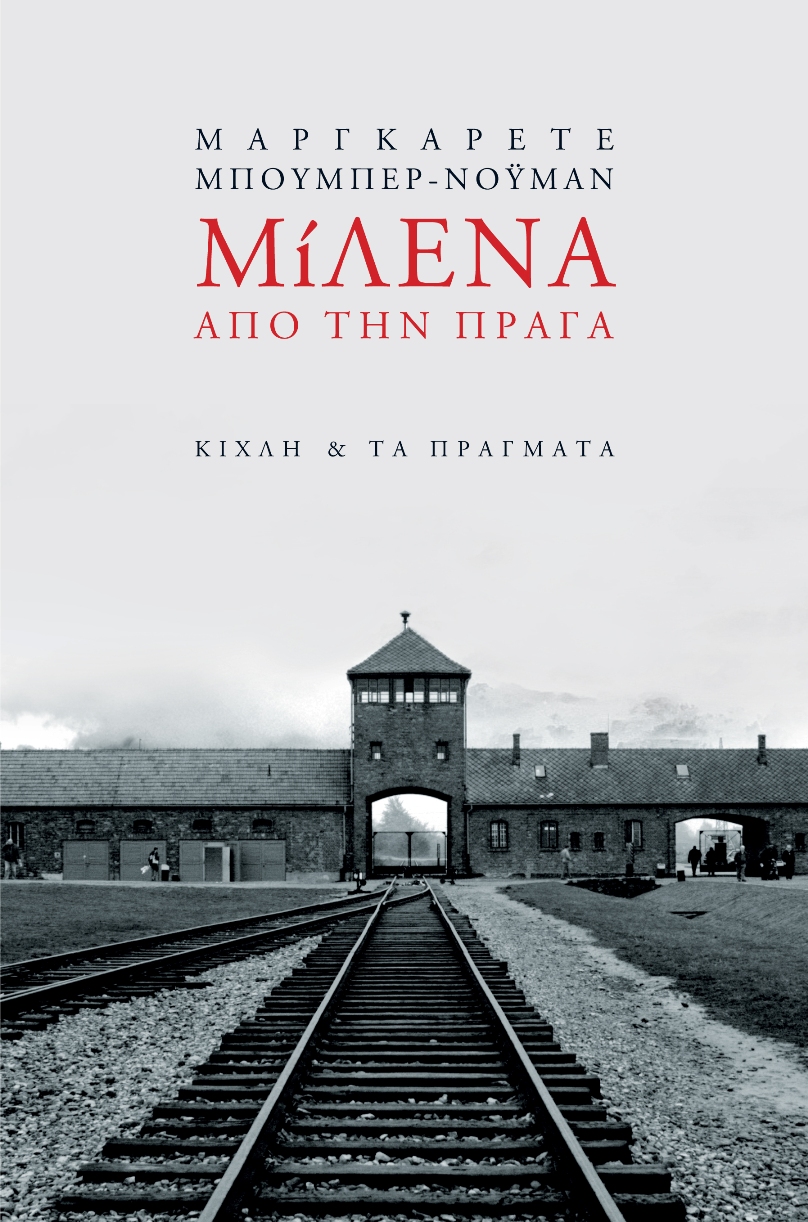
|
Milena from Prague
Margarete Buber-Neumann
Milena from Prague (original title: Milena,
Kafkas Freundin, 1963) is an outstanding
example of concentration camp literature and
the first biography of Milena Jesenska, known
to us from Franz Kafka's Letters to Milena.
Buber-Neumann's narrative focuses on the chronicle
of her friendship with Milena, which arose in the harsh
daily life of the Nazi Ravensbruck concentration camp.
The work accomplishes a double aim: as a concentration camp
testimony, it provides a first-hand account of the rapid
deterioration of living conditions at the camp, culminating
in the transformation of Ravensbruck from a labour camp to
an extermination camp.
Read more >>
|
|
| |
|
| |
|
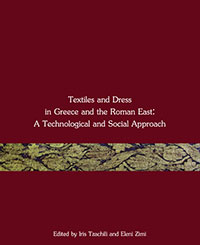
|
Textiles
and Dress in Grece and the Roman East: A
Technological and Social Approach.
Edited by Iris Tzachili and Eleni Zimi
Dress,
textiles and their production process are
a difficult scientific venture to embark
upon, due to the complexity of the subject.
They present many different aspects and
touch on a wide variety of social sectors,
such as the economy, technique, raw materials,
commerce, fashion and symbolisms of all
kinds. This is even more the case when the
period covered is the Roman era in Greece,
a multifarious and little-studied time influenced
both by the weight of Classical tradition
and by the new mores and customs spreading
throughout the empire.
Read
more >>
|
|
| |
|
| |
|
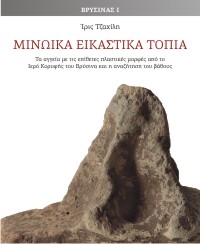
|
Vrysinas
I - Minoan Artistic Landscapes. The vases
with applied plastic figures from the Vrysinas
Peak Sanctuary and the quest for depth.
by Iris Tzachili
The
starting-point of this study is a series
of vases from the Vrysinas Peak Sanctuary
with applied plastic decoration representing
landscapes, currently presented as unique
to this site. There is also reference to
the clay figurines with depictions of rocks,
trees and animals from the same site. The
finds, the methods of artistic representation
and other similar Minoan finds are analysed,
before moving on to other categories of
Minoan artwork with representations of landscapes.
There is extensive discussion of the concept
of perspective, the quest for depth and
the form this quest assumes in Minoan contexts.
Read
more >>
|
|
| |
|
| |
|
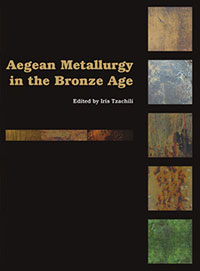
|
Aegean
Metallurgy in the Bronze Age
Edited by Iris Tzachili
The
jigsaw puzzle of the metallurgy and metalworking
of the Aegean is slowly being completed.
It is being filled in by new finds, new
methods, and analyses that point to new
possibilities. The pieces of the puzzle
are still difficult to assemble: our knowledge
is frequently fragmented, both geographically
and chronologically. Nevertheless it is
now possible to arrive at a minimum series
of technical events in a chronological and
geographical sequence, not just a sequence
of abstract technological development, following
a continuous and linear concept. The effort
is rather directed to plotting the evidence
in chronological, technical and geographical
correspondence, albeit with a number of
gaps, regressions and delays.
Read
more >>
|
|
| |
|
|